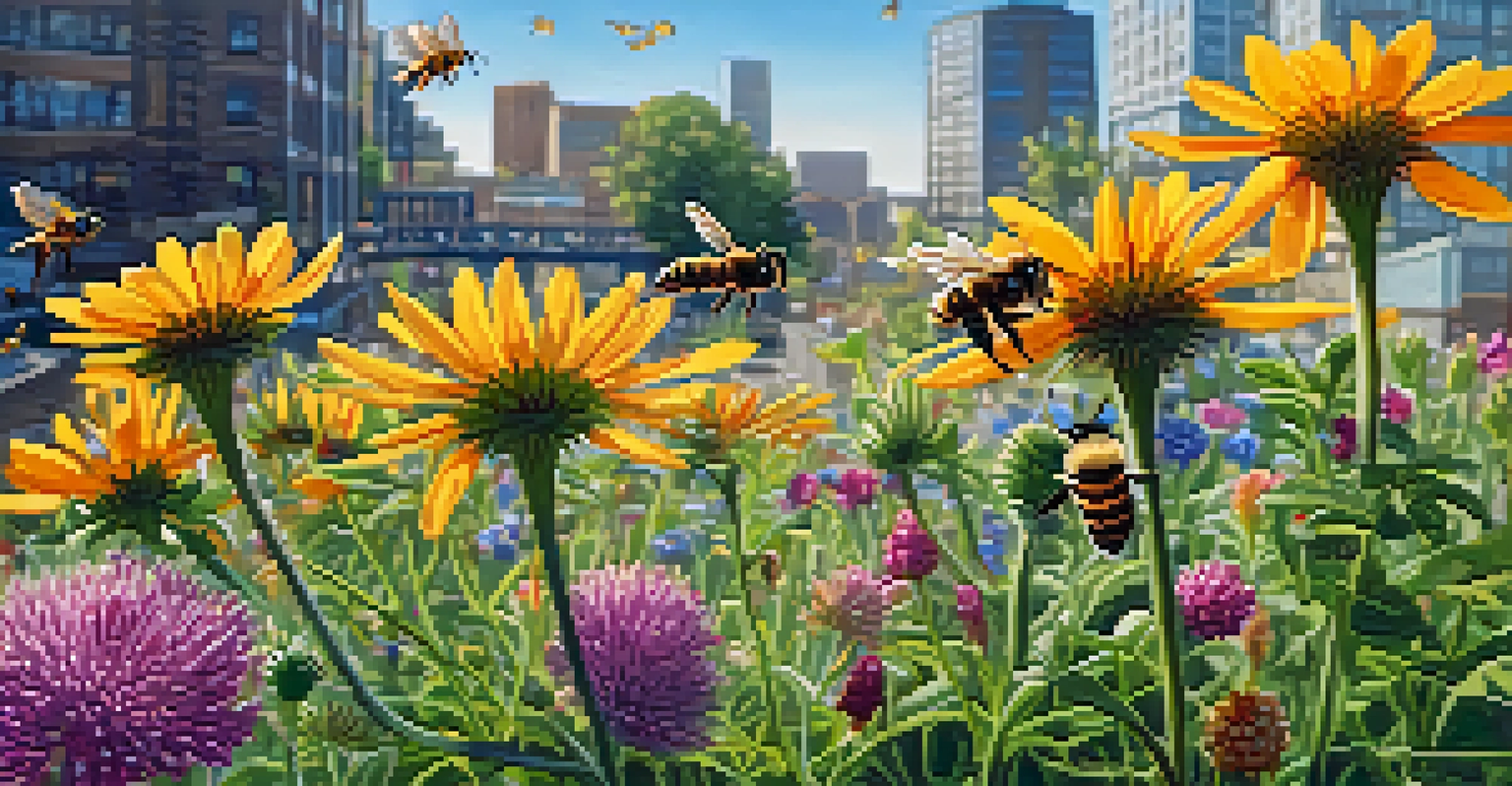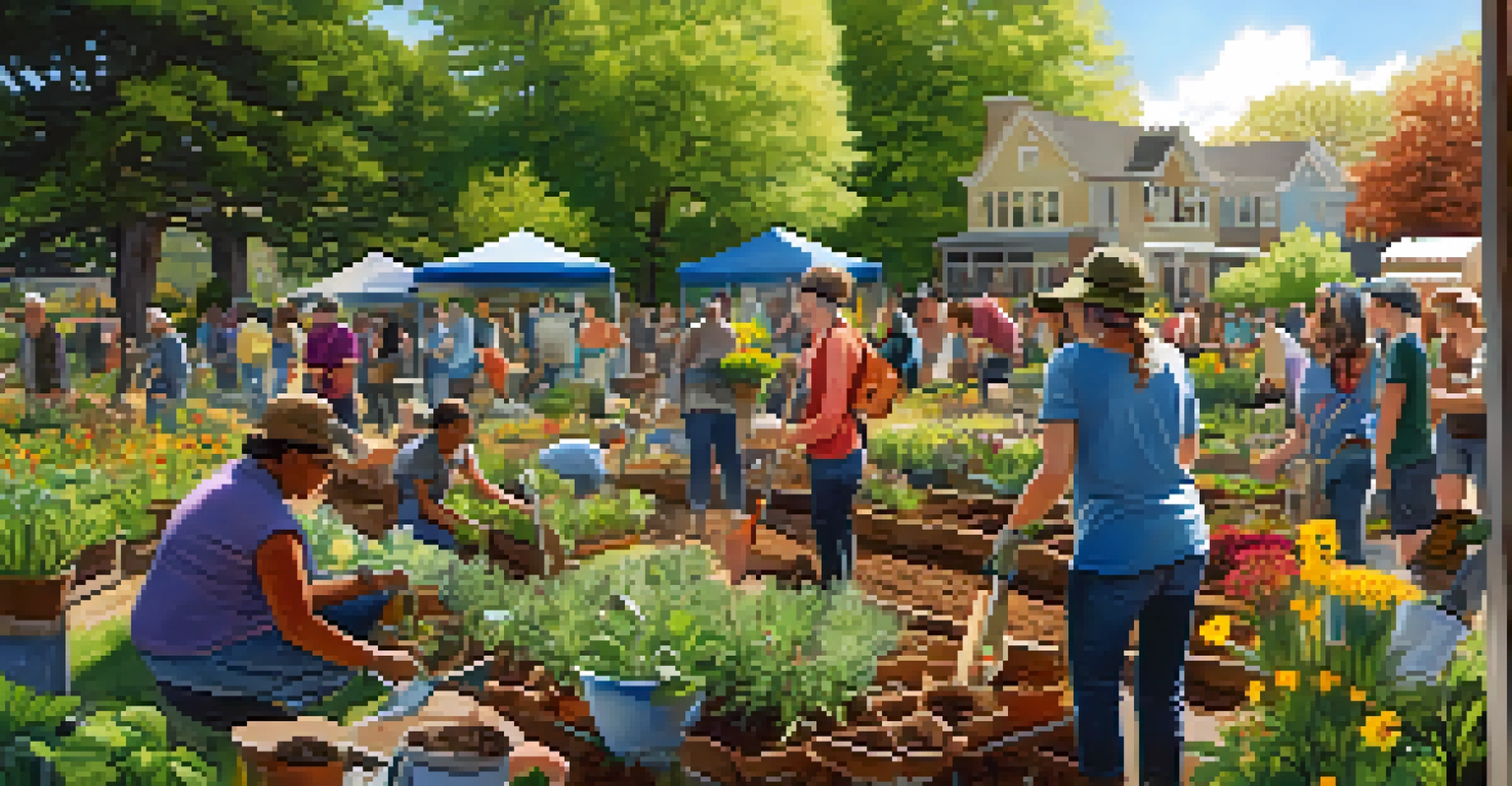The Importance of Biodiversity in Portland's Urban Ecosystems

Understanding Biodiversity in Urban Settings
Biodiversity refers to the variety of life within a particular habitat, including the different plants, animals, fungi, and microorganisms. In urban settings like Portland, this diversity is crucial as it helps maintain ecological balance. Cities may seem like concrete jungles, but they can also foster vibrant ecosystems that contribute to the overall health of the environment.
Biodiversity is not a luxury; it is a necessity for human survival.
In Portland, you can find a mix of native species thriving alongside urban development. This blend not only beautifies the city but also supports vital functions such as pollination and nutrient cycling. For instance, local bees play a significant role in pollinating flowers in parks and gardens, ensuring that plants can reproduce and flourish.
Preserving biodiversity in urban areas like Portland isn’t just about protecting wildlife; it also enhances the quality of life for residents. Green spaces filled with diverse species provide places for recreation, relaxation, and education, creating a stronger connection between people and nature.
Benefits of Biodiversity for Urban Health
The presence of diverse species in urban ecosystems can significantly improve air and water quality. Trees, for example, filter pollutants out of the air and provide shade, making neighborhoods cooler and more pleasant. This is especially important in a city like Portland, where summer temperatures can rise unexpectedly.

Urban biodiversity also plays a role in reducing urban heat islands, where built-up areas become significantly warmer than their rural surroundings. By incorporating a variety of plants and trees, Portland can mitigate these temperature differences, leading to a more comfortable environment for its residents.
Biodiversity Enhances Urban Life
Diverse ecosystems in urban areas like Portland enrich the quality of life by improving air and water quality, supporting mental health, and providing recreational spaces.
Moreover, diverse ecosystems contribute to mental health benefits. Studies show that spending time in nature—surrounded by a variety of plants and wildlife—can reduce stress and improve mood. Portland's parks and greenways offer residents easy access to these natural benefits, fostering a sense of well-being.
Biodiversity and Climate Resilience
As climate change poses increasing challenges, biodiversity helps cities like Portland become more resilient. Diverse ecosystems can adapt better to changes in climate, such as extreme weather events or shifting temperatures. This adaptability is crucial for the survival of urban wildlife and the stability of local ecosystems.
In nature's economy, the currency is not money, it is life.
For example, having a variety of tree species means that some will thrive in warmer temperatures while others may withstand drought conditions. This variety ensures that Portland's urban forest can continue to provide essential services, such as carbon sequestration and habitat for wildlife, despite changing environmental conditions.
Furthermore, diverse habitats can help manage stormwater, reducing flooding risks during heavy rain. By incorporating a range of native plants that can absorb excess water, Portland can mitigate the impacts of heavy storms while enhancing the overall health of its urban ecosystems.
The Role of Community in Supporting Biodiversity
Community involvement is essential for promoting and preserving urban biodiversity. Local residents can take part in initiatives such as community gardens, native plant landscaping, and wildlife-friendly practices. By working together, Portlanders can create spaces that support a diverse array of species.
Educational programs and workshops can empower citizens to understand the importance of biodiversity. When people learn about local flora and fauna, they become more invested in protecting these resources. For instance, planting native species in their gardens can attract pollinators and other beneficial wildlife.
Community Drives Biodiversity Efforts
Active participation from residents in gardening, education, and conservation initiatives is crucial for fostering and preserving urban biodiversity.
Moreover, community events focused on biodiversity can foster a sense of pride and ownership among residents. Whether it’s a neighborhood clean-up or a planting day, these activities can strengthen community bonds while enhancing the local ecosystem. Everyone has a role to play in creating a thriving urban environment.
Native Species: The Backbone of Portland's Ecosystems
Native species are crucial for maintaining the integrity of Portland's urban ecosystems. These plants and animals have evolved to thrive in the local environment, making them better suited than non-native species. They provide essential habitat for wildlife and contribute to the overall health of the ecosystem.
By focusing on native species in landscaping and restoration projects, Portland can enhance its biodiversity. For example, planting native wildflowers not only supports pollinators but also helps maintain soil health and stabilize local waterways. This creates a more resilient urban landscape that benefits both nature and the community.
Additionally, promoting native species can help combat invasive plants that threaten local ecosystems. By understanding and valuing the importance of native flora and fauna, Portlanders can take actionable steps to protect their urban environment from the negative impacts of invasive species.
Challenges Facing Urban Biodiversity in Portland
Despite the many benefits of biodiversity, urban areas like Portland face several challenges. Habitat loss due to development and urban sprawl can significantly impact local wildlife populations. As green spaces shrink, many species struggle to find suitable habitats, leading to a decline in biodiversity.
Pollution is another major threat to urban ecosystems. Contaminants from roads and industrial areas can harm sensitive species and disrupt ecological balance. For instance, runoff from streets can carry harmful chemicals into rivers, affecting aquatic life and the overall health of Portland's waterways.
Urban Biodiversity Faces Challenges
Challenges such as habitat loss, pollution, and climate change threaten urban biodiversity, necessitating collaborative efforts to address these issues.
Furthermore, climate change poses an increasing threat to urban biodiversity. Changing weather patterns can disrupt migration and breeding cycles, making it difficult for species to adapt. Addressing these challenges requires a collaborative effort from city planners, conservationists, and the community.
Future Steps for Enhancing Biodiversity
To ensure the future of biodiversity in Portland's urban ecosystems, proactive measures are essential. City planners can prioritize green infrastructure in new developments, ensuring that natural spaces are integrated into urban design. This could include green roofs, rain gardens, and wildlife corridors, all of which support biodiversity.
Community engagement is also vital in fostering a culture of conservation. By encouraging citizen science projects, Portland can leverage the knowledge and enthusiasm of its residents to monitor local ecosystems and contribute to conservation efforts. This collective involvement can lead to meaningful change.

Lastly, education and advocacy play crucial roles in enhancing urban biodiversity. Schools, local organizations, and government agencies can work together to raise awareness about the importance of biodiversity and provide resources for residents to get involved. Together, these steps can pave the way for a more biodiverse and healthy Portland.